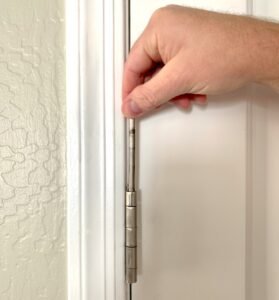
Fixing a squeaky louver door isn’t rocket science, but it does require a bit of know-how and a few simple tools. Imagine you’re performing a quick tune-up on a beloved bike; you just need the right approach to get everything running smoothly again. In this guide, we’ll walk through the steps to silence those pesky squeaks, ensuring your louver door operates quietly once more.
Understanding the Cause of the Squeak
Before diving into the fixes, it’s helpful to know what’s causing the squeak in the first place. Most often, squeaking occurs due to friction in the hinges. When the door moves, the metal parts rub against each other, creating that annoying sound. Over time, dirt and grime can build up, causing even more friction.
Here’s the thing: if your door isn’t lubricated properly, it can lead to wear and tear on the hinges. Think of it like a car engine; without oil, parts can grind against each other and eventually break down. So, before you start looking for more complex fixes, it’s crucial to ensure that the hinges are clean and well-lubricated.
Gathering Your Tools
Before you tackle the repair, make sure you have the right tools. Here’s a simple list that you’ll need:
- Screwdriver: Depending on your hinges, you may need a flat-head or Phillips screwdriver.
- Lubricant: Use a silicone spray or a light machine oil. Avoid heavy oils that can attract dust.
- Paper towels or a clean rag: To clean the hinges and remove excess lubricant.
- Optional: Pliers: In case you need to remove any stubborn screws.
Having these tools ready will help your task go smoothly. If you find your louver door hinges are particularly stubborn, a little patience and the right tools will make all the difference.
Cleaning the Hinges
Once you have your tools, the first step is to clean the hinges. Here’s how:
1. Open the door fully: This gives you better access to the hinges.
2. Inspect the hinges: Look for any visible dirt or grime. Sometimes, a quick visual check can reveal just how much buildup has accumulated.
3. Wipe with a clean rag: Use a paper towel or cloth to remove any visible dirt. This step is essential because you don’t want to trap dirt in the lubricating process.
Cleaning the hinges not only helps reduce noise but also prolongs their lifespan. Think of it like giving your door a mini spa day—it’ll thank you by working quietly!
Applying Lubrication
Now for the fun part—lubrication! Here’s what you need to do:
1. Choose your lubricant: Silicone spray works well because it’s lightweight and won’t attract dirt. If you’re using machine oil, make sure it’s light to avoid corrosion.
2. Apply the lubricant to the hinges: Spray or gently apply a drop of oil to each hinge. Be sure to cover both sides for complete coverage.
3. Move the door back and forth: After applying the lubricant, gently swing the door open and closed a few times. This helps distribute the oil into the hinge mechanism.
You might be wondering, “How often should I do this?” For best results, performing this maintenance every few months can prevent squeaks from coming back.
Checking the Screw Tightness
After cleaning and lubrication, it’s a good idea to check if the screws are tight. Loose screws can also cause squeaks since they may allow movement that creates friction. Here’s how to check:
1. Take your screwdriver: Use the appropriate type based on your hinge screws—either flat-head or Phillips.
2. Tighten the screws: Go around each hinge and tighten any loose screws. Be careful not to overtighten; this can strip the screws and create more problems.
3. Open and close the door again: Once you’ve tightened everything, test the door to see if the squeak is gone.
If the squeak persists, don’t worry. Sometimes it takes a little trial and error to completely eliminate the noise.
When to Replace Hinges
If you’ve cleaned, lubricated, and tightened everything, but the squeak is still haunting you, it might be time to consider replacing the hinges. Here are some signs:
– Visible Wear: If the metal looks worn or corroded, it’s probably time for a new hinge.
– Persistent Noise: If no amount of cleaning or lubrication helps, you may have a defective hinge.
– Misalignment: If the door hangs unevenly, it can strain the hinges, causing squeaks.
Replacing hinges isn’t complicated, but you’ll need to ensure you buy the right size and type for your louver door.
In summary, fixing a squeaky louver door with hinges is a straightforward process. By understanding the problem, gathering the right tools, and following the steps to clean and lubricate the hinges, you can enjoy a quiet door once more. And if all else fails, remember that sometimes a simple hinge replacement is all it takes.
So, the next time you hear that annoying squeak, you’ll know exactly what to do. It’s just a matter of time before your lovely louver door is back in action, quietly swinging open and closed without a sound. Happy fixing!